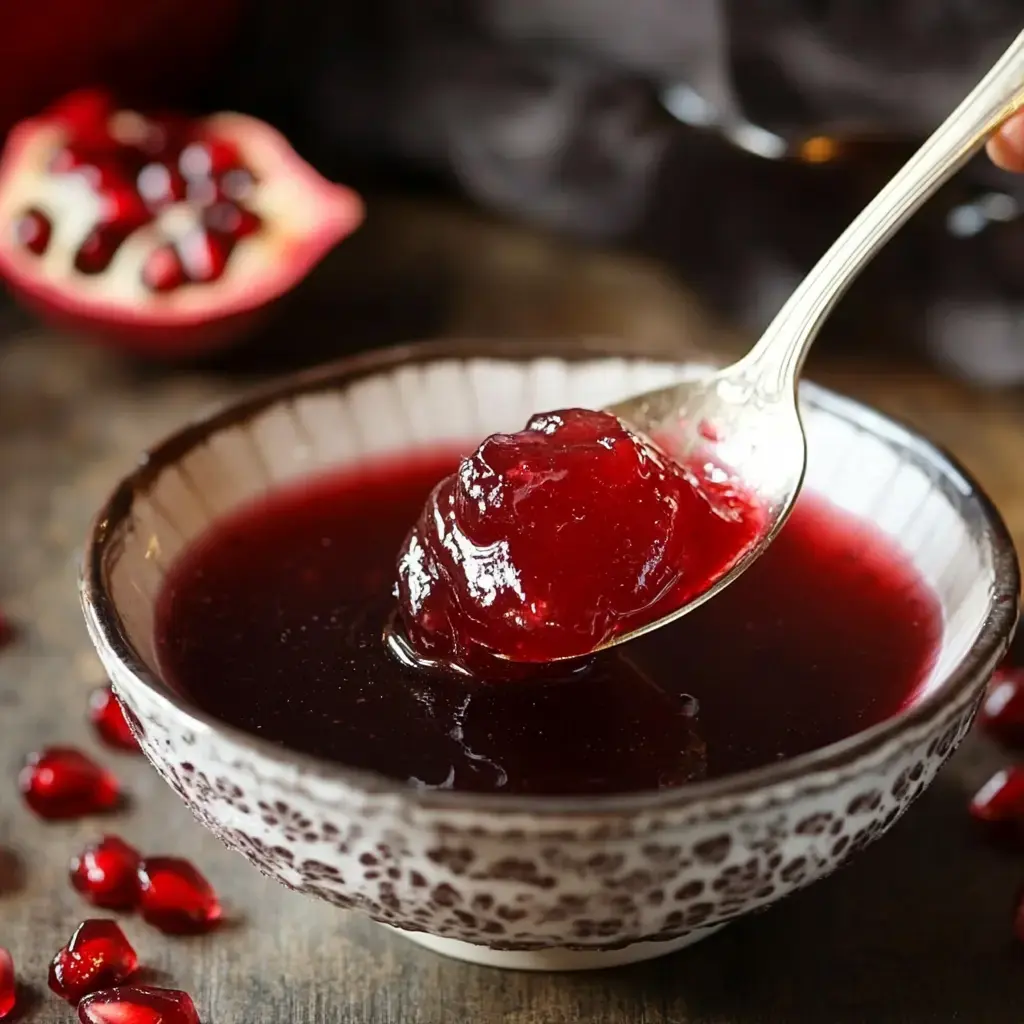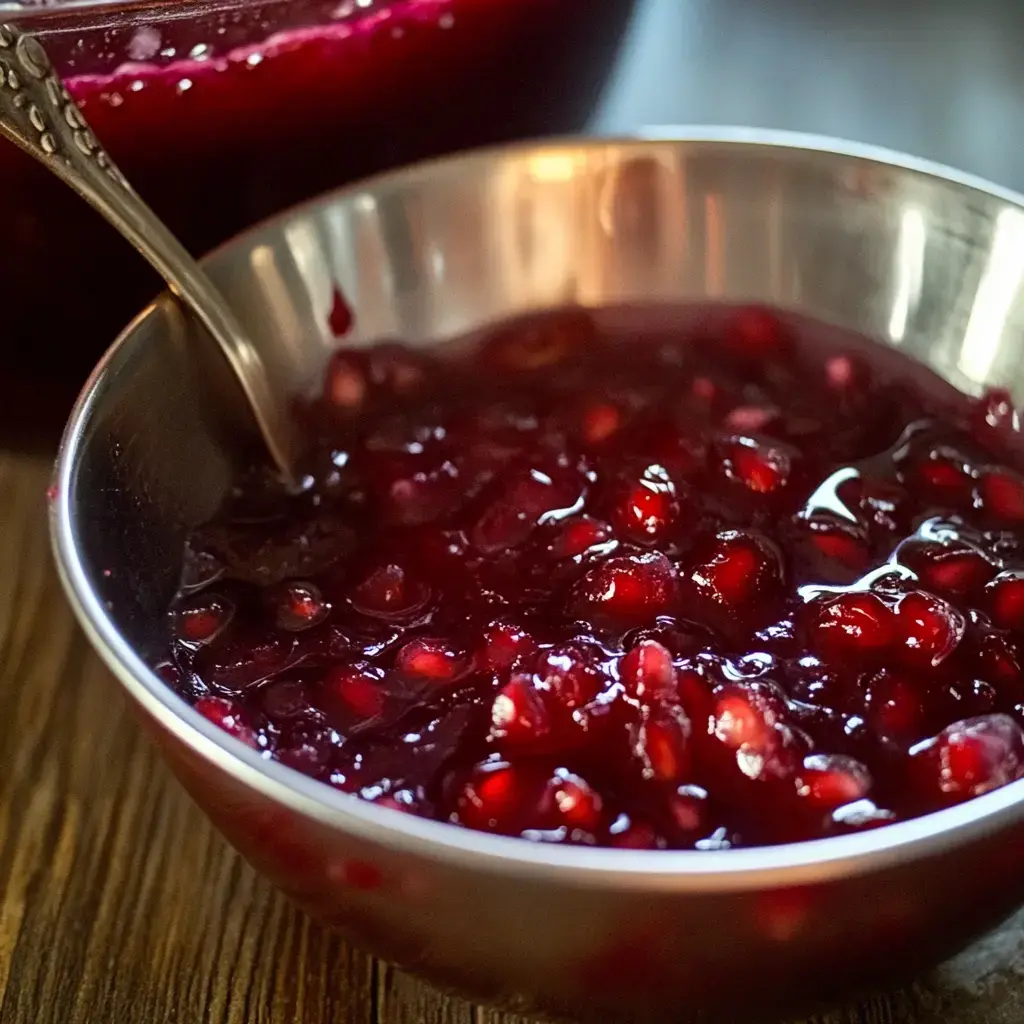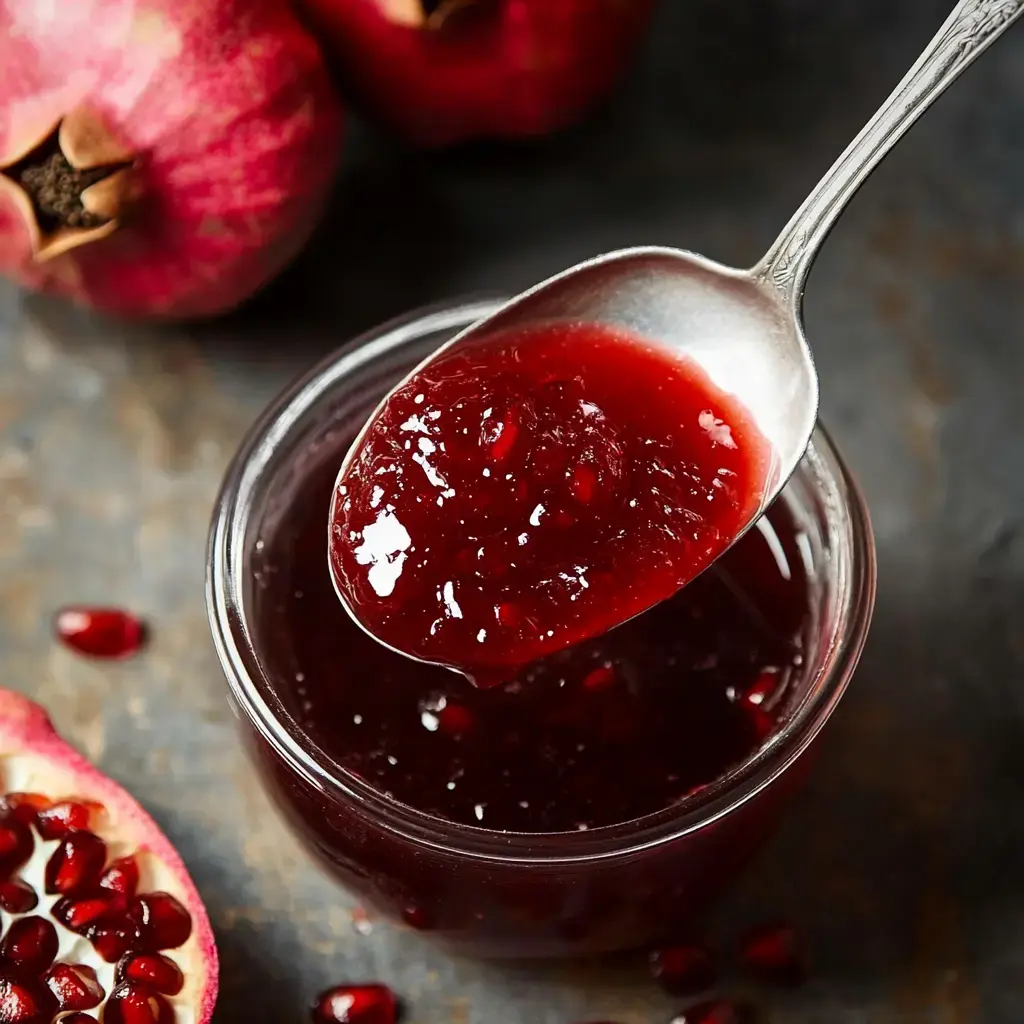 Save
Save
Making Pomegranate Jelly always puts me in a good mood. Fresh pomegranate juice gives it a great flavor and a stunning color. You only need a little sweetness here, so it's not overly sugary or puckery. My grandma shared this method with me, and now I whip it up every pomegranate season.
Unique Perks of Pomegranate Jelly
You can use this jelly in lots of ways. Try swirling it into yogurt, slather it on fresh toast, or adding a layer on grilled chicken. Grab three simple things from your kitchen—sugar, pomegranate juice, and pectin. The real juice brings out both the color and the zippy taste you'll never find in store jars. Make extra when pomegranates are everywhere, and you'll enjoy it for months.
Ingredients
- Pectin: Use basic powdered pectin from the store so the jelly gets firm and just right
- Pomegranate Juice: Pick pure, real juice for unbeatable flavor with nothing extra mixed in
- Unsalted Butter: A small dab keeps those pesky bubbles away as it cooks, but you don't have to include it
- White Sugar: Old-school sugar helps the jelly form and saves that vibrant red hue
Steps to Make It
- Water Bath Finish:
- Submerge your packed jars in boiling water, making sure they're under the surface. Let them cook for about 10 minutes, then set them aside to cool down.
- Ladle Jelly In:
- Pour the hot jelly mixture into those warmed jars, leaving a little room at the top edge. Clean the rims and pop on the lids.
- Skim the Pot:
- Once you're done cooking, remove the pot from the heat. Gently scrape off any foam that's floating at the top.
- Add Sugar, Bubble Again:
- When it reaches a solid boil, throw in all your sugar. Stir well while you let it boil for 2 and a half minutes.
- Heat the Jars:
- Put your jars in a bath of hot water so they heat up for a bit, then carefully pull them out onto a towel.
- Cooking Time:
- Toss the pomegranate juice, pectin, and if you're using it, butter, into a heavy pot. Set the heat to medium-high, stirring until things start to bubble.
- Prepare Juice:
- If you’re using fresh fruit, blend up the seeds and strain out any chunks with a cloth—you're going for totally clear juice here.
- Jar Prep:
- Grab four pint jars, bands, and lids. Wash them in warm soapy water and dry on a fresh towel.

Homestyle Pomegranate Jelly Fun
Cracking open your own jar of pomegranate jelly never gets old. It’s bright, the flavor pops, and nothing from the store stands a chance. My kids crack up as the jelly wiggles on their toast — and I get the peace of mind from making it myself.
What Sets a Good Jelly Apart
The best jelly lets light through and keeps its shape on your spoon. No lumps or chunks, just a nice, bouncy texture. That's different from jam. When the sun hits it, pomegranate jelly glows like a jewel.
Pectin Know-How
Pectin is the magic that thickens jelly. Since pomegranates barely have natural pectin, adding some does the trick. I always use regular store-bought pectin. It sets up firm in about thirty minutes. There’s no need to simmer for ages or fuss with straining overnight like the old days.
Picking Out Your Juice
The right juice makes a big difference. Fresh fruit is awesome if you’ve got it, but pure bottled juice is great too. Just check the label for 100% pomegranate—don’t settle for anything blended with sugar or other fruit.

Nailing the Jelly Texture
Getting jelly just right isn’t hard, but don’t rush it. Stir pectin and juice together, heat until it’s moving. Add your sugar, let it boil hard, and time exactly two and a half minutes. That’s usually perfect in my kitchen, but give it an extra minute if you like it extra stiff. Skimming the foam at the end keeps it looking pro.
Overview
If you’re wild about pomegranates, try tossing them into a glaze for roast meats, juicing for drinks, or freezing for tangy sorbet. They give everything a zingy kick.
Recipe Q&A
- → Why do I need pectin?
Pectin’s what helps your jelly firm up. Skip it and you’ll just have syrup. Homemade jelly needs commercial pectin, like sure-jell. Go with powdered—it stirs in easy, especially if the fruit is hot and bubbling.
- → Is butter really needed?
Butter helps knock back foaming and keeps things smooth. If you want vegan jelly, leave it out—just be sure to skim off the bubbles. Only a pinch is needed! Coconut oil’s another swap. Without it, drop the heat to stop foam from taking over.
- → Can I use bottle juice?
As long as it’s just pomegranate and not a blend, it’ll work. Fresh juice pops more, but it does take effort. You’ll want 4 cups of juice per batch. If squeezing your own, get rid of those seeds for best texture.
- → How do I store it?
Keep unopened jars stashed away from sunlight—they’ll hold up for a year. Once opened, park the jar in the fridge and use up in three months. Scrub jar rims before sealing. If you want to stash for ages, use a water bath. Freezing? Not the best—makes jelly weird.
- → Jelly won't set - help!
Heat it back up with extra pectin—about half a pack for each round. Spoon a little on a chilled plate to check if it firms. Sugar helps it set, too. Bring mix up to 220° so it thickens right. Sometimes you just need to wait a day or two for it to fully set.
